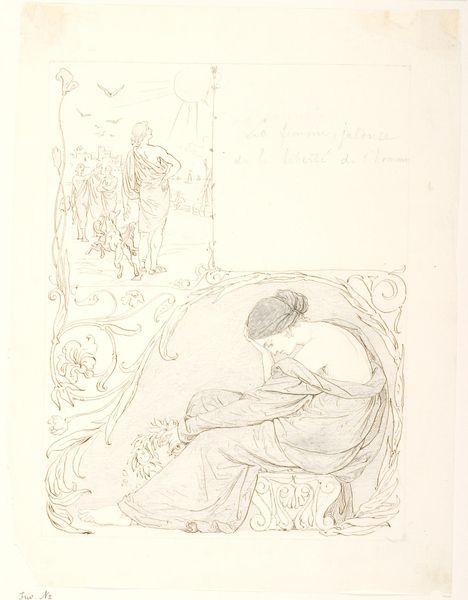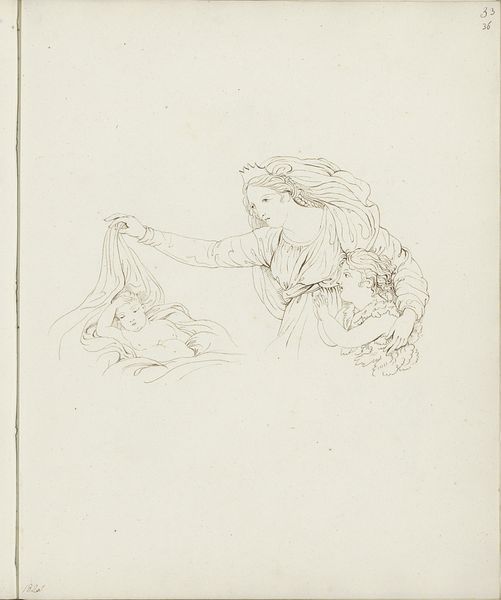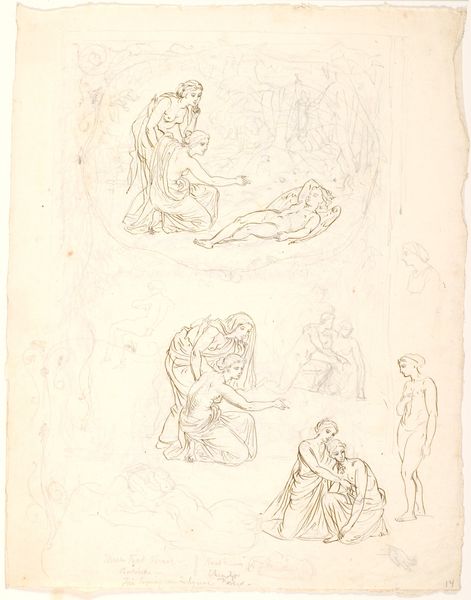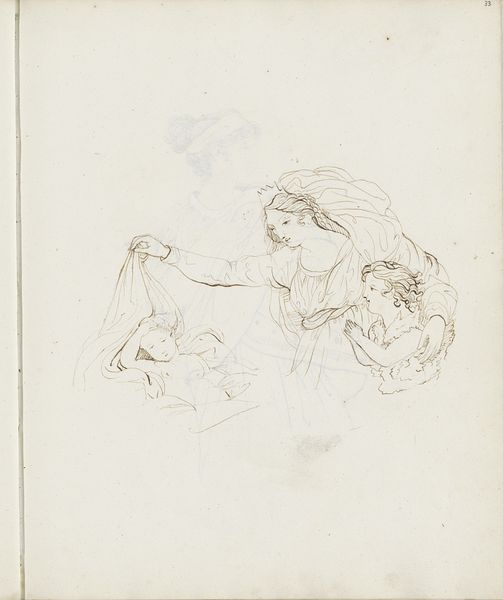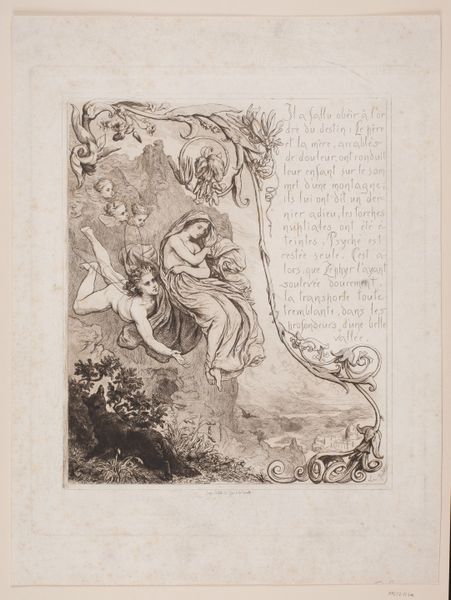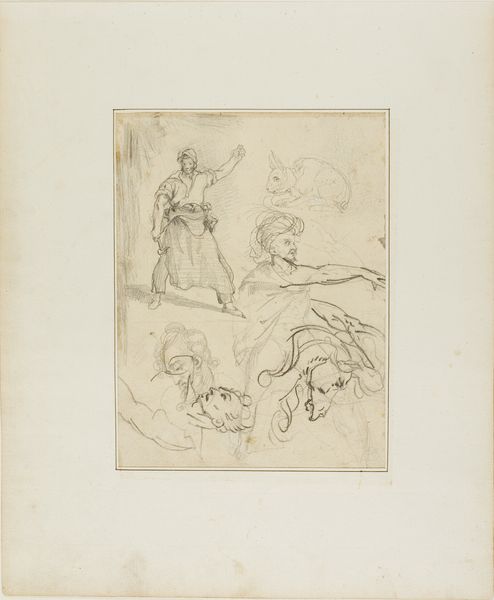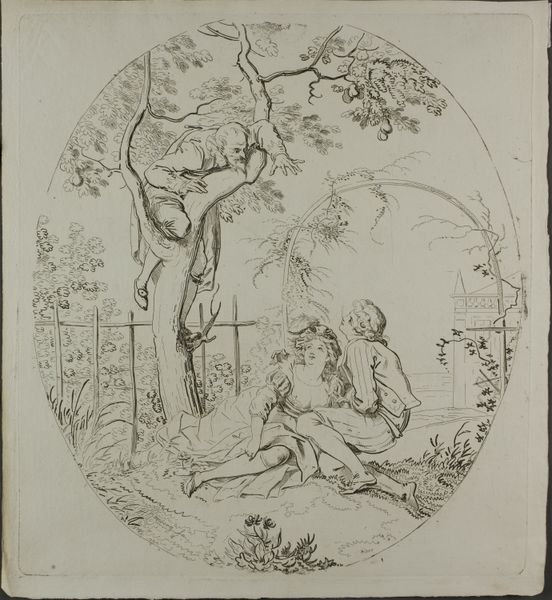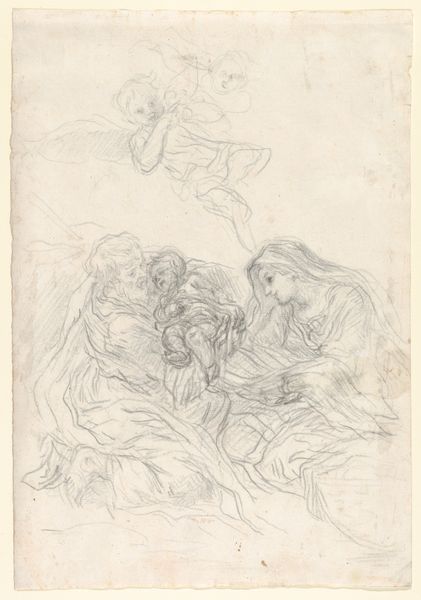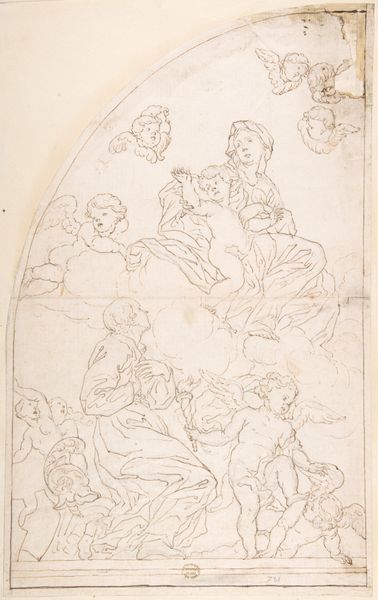
Dimensions: 304 mm (height) x 238 mm (width) (bladmaal)
Editor: So, this drawing is called "Nymphs Find Eros Sleeping," by Lorenz Frølich, created around 1860. It’s done in pencil, and there's this really dreamy quality to it. I’m immediately struck by the way the figures are nestled within this elaborate botanical framework. How would you interpret this work, especially considering its historical context? Curator: That "dreamy quality" you pinpoint is central. Frølich worked during a time of intense national romanticism. Consider how the figure of Eros, usually active, is presented as vulnerable, passive, *found*. The title places agency with the Nymphs who are about to violate his sleep. Where would such imagery originate from in mid-nineteenth century Scandinavia? Editor: So, are you saying the image is participating in an aesthetic tradition? Are we supposed to ask, what does it say about the construction of masculinity and femininity at the time, in art? Curator: Precisely! This isn't simply a rendering of a mythological scene. Who would have been consuming Frölich's romantic images? Think about the burgeoning museum culture and the rising middle class seeking to establish a Danish cultural identity, particularly through idealized, often allegorical, representations like this one. Is Frölich commenting on this or celebrating this romantic nationalistic imagery? Is Eros representing the exhausted man and the nymphs are feminine threat to virile nationalism? Editor: It’s interesting to consider the potential socio-political implications within what appears to be just a classical scene. So it’s less about the beauty of the figures and more about the viewers for whom the drawing was created. Curator: Exactly! What happens when we re-situate seemingly universal narratives within their specific cultural and institutional frameworks? Frølich's "Nymphs" reveals the complex interplay between art, power, and the construction of identity in 19th-century Denmark. It encourages you to delve deeper beyond the idyllic surface to find the messages. Editor: I'll never look at a “simple” mythological scene the same way again. Thanks! Curator: My pleasure! Considering the artwork's reception deepens its message.
Comments
No comments
Be the first to comment and join the conversation on the ultimate creative platform.
